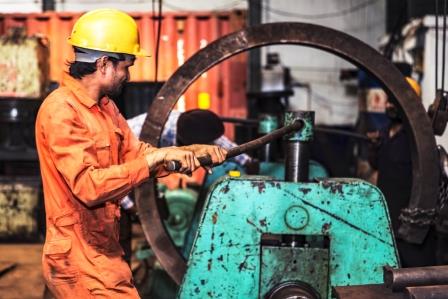Auto sector performs well in 2023 with Nifty Auto index up 24% YTD. Lower input costs and price hikes drive margin expansion. PV/2W/CV segments show growth in FY23. PV industry expected to grow 5-7% in FY24.
The auto sector is among the best performers in 2023. The Nifty Auto index has rallied by 24% YTD. Initially, we had a sceptical view regarding the sector’s outlook due to fading pent- up demand and high vehicle costs. However, lower input costs and price hikes have driven margin expansion leading to stable earnings growth.
The slowdown in China and weak global macroeconomics led the commodity price to decline. From this year’s high, China’s spot steel HRC prices is down by 13%. Similarly, spot LME zinc, copper, and aluminium are down 31%, 10%, and 18%, respectively, while palladium (key battery raw material) is down 32%.
In FY23, PV/2W/CV segments grew by 27%/17%/34% YoY, led by healthy demand and the low base of the previous year. Demand momentum is expected to continue, but at a slower growth rate in FY24 due to the higher base of FY23.
PV: For FY24, SIAM estimates the PV industry to grow modestly between 5 and 7%. ICRA expects 6-9% growth in FY24. The SUV segment is expected to grow at a higher pace than entry-level cars.
2W: In FY23, 2W domestic sales grew by 17% YoY to 15.9mn units (still much below the peak of 21.2mn units in FY19). A low base in FY23 is expected to support growth in the domestic volumes of the 2W industry to the tune of 9% YoY in FY24.
CV: In FY23, MHCVs grew by 49% YoY, and LCVs grew by 27% YoY. The industry expects the segment to grow at a high single-digit rate and a mid-single-digit rate in the LCV segment on a YoY basis in FY24. Demand for passenger MHCV (buses) is expected to grow by ~30% YoY in FY24, led by replacement demand from educational institutions. And expect a similar growth momentum in FY25, thereby indicating the CV is on an up-cycle on a longish basis. This may be the best segment in the category, and investors interest is likely to sustain.
Tractors: Industry volumes represented a 12% YoY growth in FY23, touching an all-time high of 9.45 Lac units. Domestic tractor industry growth is expected to moderate in FY24 due to a high base. Slow rural demand, the impact of unseasonal rains, the dry season, El Nino risk, and below normal rainfall in 2023 will affect the demand scenario.
Overall, we like the CV and PV segments owing to the normalising chip shortage and high booking in the SUV category in the current order book. Though a marginal impact on the CV is expected due to low fleet utilisation, in the near term. We expect the volume growth for the fiscal year to be normal, considering the high base last year and the correction in the inventory level. Demand in 2w through exports in H2 is likely to bring stability to the current volume; however, we maintain our neutral stance on the segment due to high competition, the high cost of e-2W, and uncertainty on subsidies.
Given the strong performance, the sector’s valuation has crossed above the long-term average by 15%. However, due to the healthy earnings growth outlook in FY24 of +20%, the above-average valuation is justified and likely to stay elevated in the short to medium term. Fundamental factors supportive are a longish CV cycle, a strong order book in PV, premiumisation of 2W, and moderation in input costs.
The other long-term issue the industry will have to adapt to is a stricter subsidy policy for EVs. The disruptive nature of the long-term transition into EV will increase competition and diminish the outlook for current players. The final effect of the transformation in the industry is difficult to forecast today, as many startups are slowing, and enormous advantages are emerging, technology-wise. However, the current players have the edge in terms of the availability of platforms, generating funds, and adopting technology on a step-by-step basis but, they should not lose time.
The industry is at an early stage of the EV evolution. Research on new technology (battery, biofuel, & hydrogen-based) will lead to innovation and help reduce the costs of electric vehicles. While delay can cause non -agonistic players to lose their market share, technology, and designs. Currently, battery costs are the biggest hurdle in the transition, and China holds the majority of its supply chain. In addition, ~60% of electronic components are used in the EV versus the minimum in the ICE technology. The operational skills are variedly different, and the real benefit will be visible only through technological transfer, JVs, and high corporate investment in infrastructure.
First published in Mint









